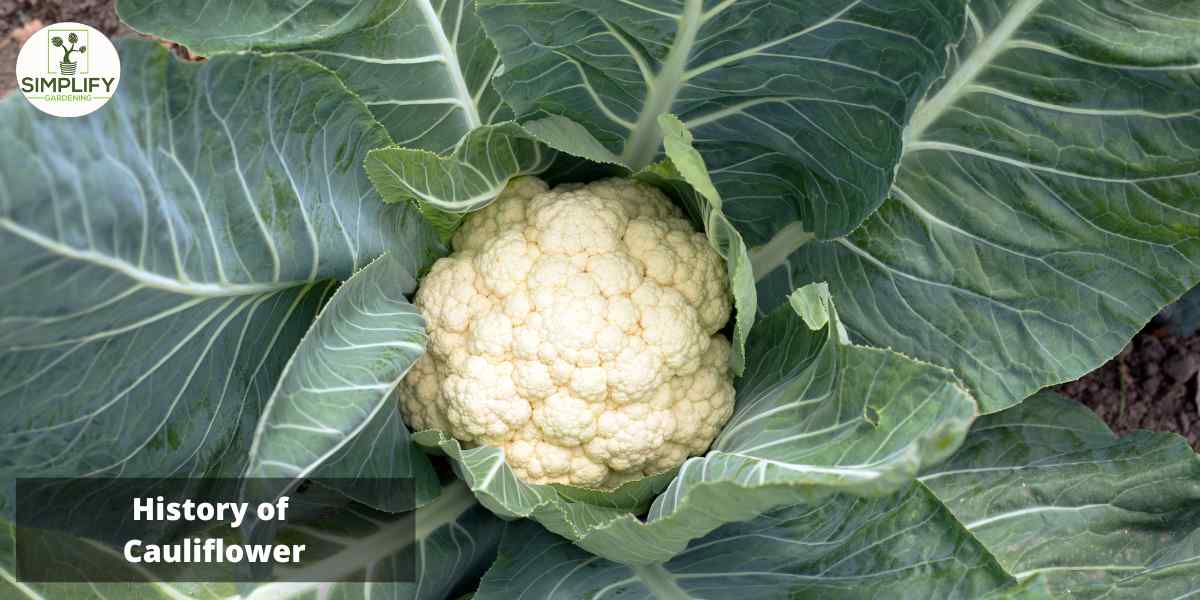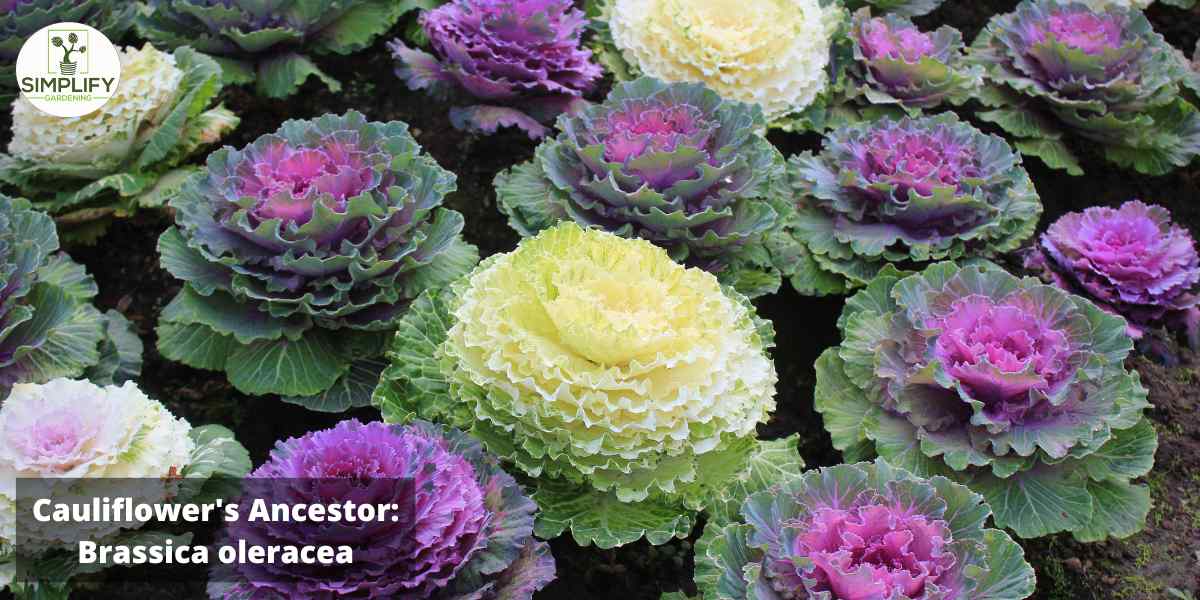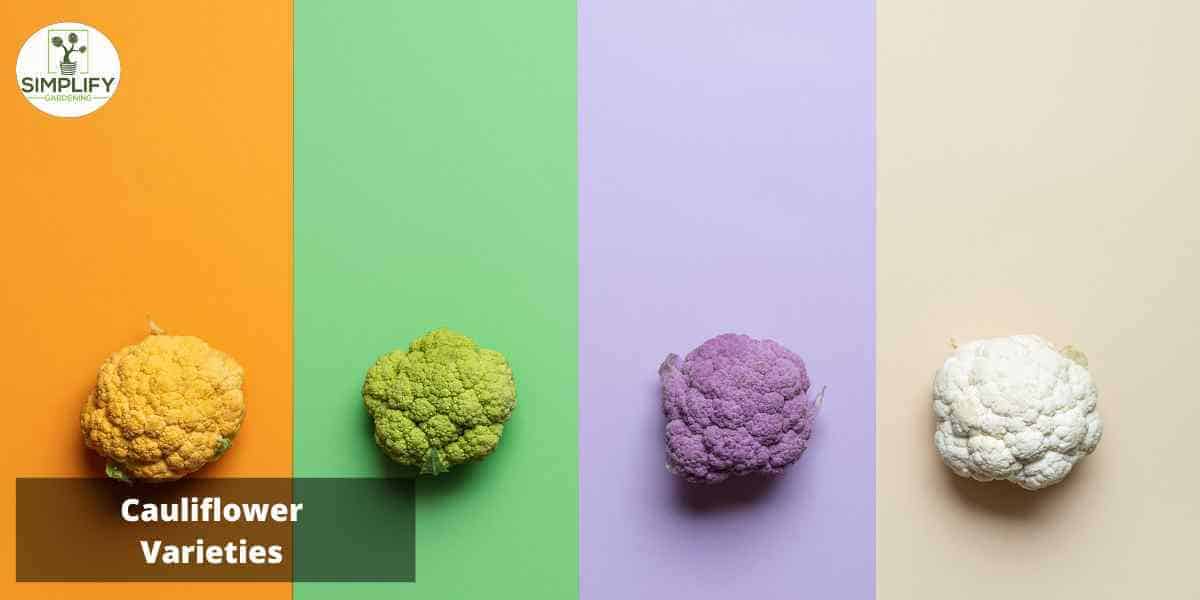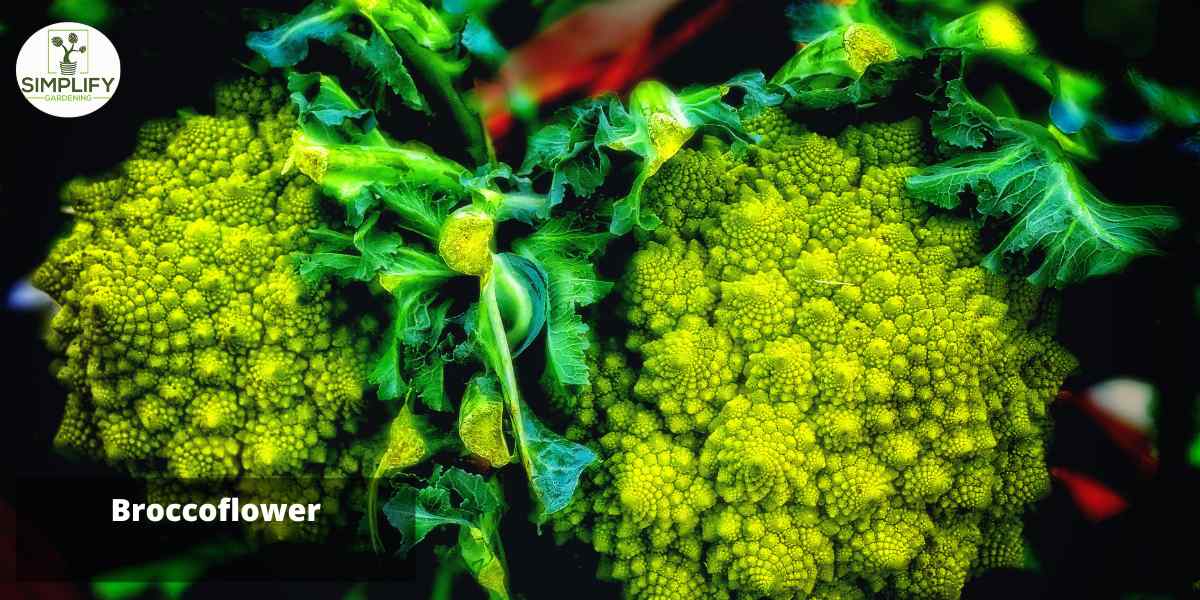Tony O’Neill, expert gardener and best-selling author of the famous “Simplify Vegetable Gardening,” “Composting Masterclass,” and “Your First Vegetable Garden,” combines lifelong passion and expert knowledge to simplify gardening. His mission? Helping you cultivate a thriving garden. More on Tony O’Neill
Cauliflower, kale, collards, broccoli, and kohlrabi are all different variations of the original wild cabbage (ornamental cabbage), known scientifically as Brassica oleracea.
The name cauliflower means “cabbage flower” and refers to the edible head comprising a mass of abortive flowers. Cauliflower originated in the Asia Minor and Mediterranean regions and was mainly cultivated in Italy.
Introduction
Cauliflower is a fascinating vegetable that has gained popularity and become a staple in many households worldwide. However, its origins are a mystery scientists and historians have puzzled about for centuries.
It is believed that cauliflower originated in the Mediterranean and Asia Minor regions over two thousand years ago. The ancient Greeks and Romans were the first to cultivate cauliflower, which was later introduced to other parts of Europe by the Arab traders.

Today, cauliflower is grown worldwide and comes in various colors, including white, green, purple, and orange. This versatile vegetable can be eaten raw or cooked and is often used as a substitute for rice or potatoes in low-carb diets.
Despite its popularity, the mystery of how cauliflower first came to be, remains unresolved.
Importance of Cauliflower in Culinary and Nutritional Aspects
Cauliflower is a versatile and nutritious vegetable recently gaining popularity in culinary circles. It is a member of the cruciferous vegetable family packed with vitamins, minerals, and antioxidants that benefit human health.
In addition to its nutritional value, cauliflower is also an excellent substitute for starchy carbohydrates in dishes such as pizza crust, mashed potatoes, and rice, making it an ideal option for individuals trying to limit their carbohydrate intake or follow a low-carb diet.
Additionally, cauliflower can be roasted, sautéed, grilled, or even pureed to create various flavorful and satisfying dishes. Due to its versatility and nutritional value, cauliflower has become an essential ingredient in the culinary world and is widely appreciated for its taste and health benefits.
The Origins of Cauliflower
According to some theories, cauliflower originated in Cyprus, an island country in the eastern Mediterranean. Others believe its origin lies in Asia Minor, including modern-day Turkey.
Another popular theory suggests that it originated in the Eastern Mediterranean region. Regardless of its origin, cauliflower has become a staple in many cultures and cuisines, and its versatility has led to various delicious culinary creations.
Cauliflower’s Wild Ancestor: Brassica oleracea

Cauliflower’s wild ancestor is Brassica oleracea, a plant species native to Europe and coastal areas of the Mediterranean.
This plant is known for its ability to adapt to different environmental conditions. As a result, it has given rise to many domesticated crops, including broccoli, cabbage, and kale.
Brassica oleracea typically grows as a biennial, meaning it completes its life cycle over two years. In the first year, a rosette of leaves is formed at the base of the plant, and during the second year, the plant flowers and produces seeds.
The wild variety of Brassica oleracea has a much smaller and less tasty cauliflower head compared to the modern cultivated version we see today.
Nonetheless, the wild ancestor has played a crucial role in the evolution of one of the most beloved vegetables in the world, the cauliflower.
Cultivation and Spread of Cauliflower
Cauliflower, an edible plant of the Cabbage family, has been cultivated and consumed for thousands of years, and there are records of its cultivation in many ancient civilizations.
Records of Cauliflower Cultivation in Ancient Civilizations

In ancient Rome, cauliflower was considered a luxury food popular among the wealthy. The ancient Greeks also cultivated cauliflower, a common ingredient in their cuisine.
Similarly, in ancient India, cauliflower was used in various dishes and was considered a healthy dietary option. Even in ancient China, cauliflower was grown and consumed for its medicinal properties.
Cauliflower cultivation has persisted and remains a popular and nutritious vegetable worldwide. The fact that cauliflower has been a part of various ancient civilizations shows its significance in human diets and cultures.
Further Development of Cauliflower
Developing new cauliflower varieties is a continuous process that involves selecting and breeding plants with desirable traits such as yield, disease resistance, flavor, and color. Scientists and breeders use different strategies to develop new varieties, including crossbreeding, selection, genetic modification, and hybridization.
Development Of New Cauliflower Varieties
One of the reasons for developing new cauliflower varieties is to increase yield and productivity. These new varieties are bred to have larger heads or florets, which can provide more edible vegetable portions per plant.
New cauliflower varieties are also developed to be more resistant to pests and diseases, thus reducing pesticide use and leading to a broader range of colors, shapes, and flavors.

This has contributed to the popularity of cauliflower, especially in the culinary industry, where different varieties are used to create unique and exciting dishes.
The development of new cauliflower varieties has been a significant step in agriculture. It has increased farmers’ productivity and profitability and provided consumers with diverse and nutritious options.
The continued effort to develop new varieties is crucial in sustaining the demand for cauliflower in the future.
Advancements in Hybridization and Genetic Modification
In recent years, scientists have significantly improved cauliflower’s hybridization and genetic modification to improve its quality, yield, and resistance to pests and diseases. Some examples of these innovations are:
Purple cauliflower: This variety has a high content of anthocyanins, which are natural pigments that give the vegetable its purple hue. Anthocyanins have antioxidant and anti-inflammatory properties that may benefit human health.
Broccoflower: This hybrid is a cross between broccoli and cauliflower. It has a similar appearance and taste to cauliflower but with a slightly sweeter flavor and more vitamin C. It can be cooked in the same ways as cauliflower or broccoli.

Graffiti cauliflower: This variety is genetically modified to produce more chlorophyll, which gives it a bright green color. Chlorophyll is a vital component of photosynthesis and may also have some health benefits.
Romanesco cauliflower: This variety is known as Romanesco broccoli or fractal broccoli. It has a striking appearance with spiraled florets that form a fractal pattern. It has a nutty, crunchy taste and can be eaten raw or cooked.
Cauliflower in the Modern World
Cauliflower is a versatile vegetable in many dishes, from salads and soups to pizzas and curries. It has a mild flavor that can absorb different spices and sauces and a crunchy texture that contrasts soft or creamy ingredients.
Cauliflower In Contemporary Cuisine

One of the most popular ways to prepare cauliflower in contemporary cuisine is to roast it in the oven with olive oil, salt, pepper, and herbs. Roasting brings out the natural sweetness and nuttiness of the cauliflower and creates a caramelized crust that enhances its flavor.
Roasted cauliflower can be served as a side dish or tossed with pasta, rice, quinoa, or couscous for a satisfying main course.
Another way to enjoy cauliflower is to make it into rice or couscous by grating or pulsing it in a food processor. Cauliflower rice or couscous can be cooked in a skillet with oil, garlic, onion, and seasonings of your choice.
It can be used as a low-carb substitute for regular rice or couscous or mixed with them for extra texture and nutrition. Cauliflower rice or couscous can make fried rice, pilaf, risotto, or tabbouleh.
Cauliflower can also be transformed into a creamy sauce or dip by blending it with milk, cheese, butter, or yogurt. Cauliflower sauce or dip can be flavored with garlic, lemon, mustard, nutmeg, or other spices.
It can be used as a topping for pasta, pizza, baked potatoes, or nachos or as a dip for breadsticks, crackers, or vegetables.
Health Trends and Cauliflower Consumption

Cauliflower is rich in vitamin C, fiber, antioxidants, and phytochemicals that may help prevent cancer and other chronic diseases.
Cauliflower consumption has increased recently as more people seek low-carb, gluten-free, and plant-based alternatives to rice, pasta, and bread.
Cauliflower can make pizza crusts, rice bowls, mashed potatoes, and buffalo wings. Cauliflower is versatile and can be roasted, steamed, sautéed, or eaten raw.
FAQs on The History of Cauliflower: From Ancient Roots to Modern Cultivation
What is the origin of the cauliflower plant?
The origin of the cauliflower plant is believed to be in the Mediterranean and Asia Minor regions over two thousand years ago. The ancient Greeks and Romans were the first to cultivate cauliflower, which was later introduced to other parts of Europe by Arab traders. Despite this, the exact origin of cauliflower remains a mystery.
When was cauliflower cultivated?
Cauliflower has been cultivated and consumed for thousands of years, and records of its cultivation date back to many ancient civilizations. The ancient Greeks and Romans were the first to cultivate cauliflower, which was later introduced to other parts of Europe by Arab traders.
Who introduced cauliflower?
Cauliflower is believed to have been first cultivated by the ancient Greeks and Romans, who then introduced it to other parts of Europe through Arab traders. While the exact person or group who introduced cauliflower remains unknown, its origins can be traced back to the Mediterranean and Asia Minor regions over two thousand years ago.
In Summary
Cauliflower is closely related to broccoli, cabbage, kale, and Brussels sprouts. Cauliflower was introduced to Europe in the 16th century and became popular in France and England in the 18th century.
Cauliflower comes in different colors: white, green, purple, and orange. It is rich in vitamin C, fiber, and antioxidants. Cauliflower can be eaten raw, cooked, or processed into various dishes.
Cauliflower will continue to evolve as we face challenges in the future due to climate change, pests, diseases, and consumer preferences.
From the perspective of growers, we may need to adopt more resilient and adaptable varieties that can withstand heat, drought, frost, and salinity stress.
Cauliflower consumers may need to be more aware of their food choices’ environmental and social impacts. They may also need to diversify their diets and try new ways of preparing and consuming cauliflower, such as roasting, grilling, mashing, or making cauliflower rice or pizza crust.
